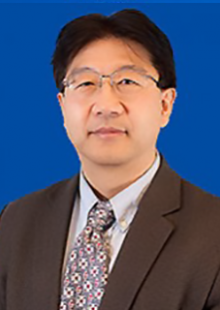
ABOUT
Professor Mo Li received his Ph.D. in applied physics in 1994 from California Institute of Technology under the supervision of Professor William L. Johnson and Professor William A. Goddard. After a brief staying as a postdoctoral fellow at Caltech and the Argonne National Laboratory, he joined Morgan Stanley & Co. in New York. He came back to academia in 1998. From 1998 to 2001 he was an assistant professor at the Johns Hopkins University. Currently he is a professor at the Georgia Institute of Technology.
PUBLICATIONS & PATENTS
- "Assessing the critical sizes for shear band formation in metallic glasses." Applied Physics Letters 91, 231905, 2007
- “Atomistic simulation of correlations between volumetric change and shear softening in amorphous metals." Physical Review B 75, 094101, 2007
- "Free volume evolution in amorphous solids subjected to mechanical deformation." Materials Transactions 48, 1816, 2007
- "Atomistic simulation of correlations between volumetric change and shear softening in amorphous metals." Physical Review B75, 094101, 2007
EDUCATION & AWARDS
Ph.D. Applied Physics, California Institute of Technology
RESEARCH INTERESTS
- Field: Computational materials science and materials theory
- Goal: To understand fundamental properties and processes of materials
Professor Li's research focuses on understanding fundamental properties and processes of materials, and predicting material behaviors. His current research focuses on the following areas: (a) phase transformations, (b) mechanical properties of materials, (c) statistical mechanics of non-equilibrium process and transformations in materials. Currently, he has the on-going research projects on (1) nanoscale materials, (2) metallic glasses, (3) equilibrium and metastable liquids, and (4) irradiation effects on materials.
These systems are characterized by metastability, small scales, and lack of long-range order. The unique difficulties presented in these materials challenge the conventional approaches developed for systems at equilibrium, with long-range order or nearly perfect or free of defects. To address the difficulties, his research employs theoretical and, in particular, computational methods. The primary purpose of the computational approach is to search for the information about the basic processes, mechanisms, and properties of these materials that are difficult or impossible to get by experiment alone, and to test and validate ideas and concepts for theoretical models.
The approaches used in his research are a blend of those from statistical physics, solid state physics, materials science, metallurgy, mechanics and computational methods. His research focuses on algorithm development, simulation, and theoretical analysis.